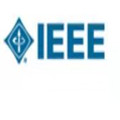We analyze the possibility that the lighter stop {\tilde t_1} could be the next-to-lightest supersymmetric particle (NLSP) in models where the gravitino is the lightest supersymmetric particle (LSP). We do not find any possibility for a stop NLSP in the constrained MSSM with universal input soft supersymmetry-breaking masses at the GUT scale (CMSSM), but do find small allowed regions in models with non-universal Higgs masses (NUHM). We discuss the cosmological evolution of stop hadrons. Most {\tilde t_1}qq `sbaryons' and the corresponding `antisbaryons' annihilate with conventional antibaryons and baryons into {\tilde t_1}{\bar q} `mesinos' and the corresponding `antimesinos', respectively, shortly after the quark-hadron transition in the early Universe, and most mesinos and antimesinos subsequently annihilate. As a result, insufficient metastable charged stop hadrons survive to alter Big Bang nucleosynthesis.
翻译:我们的分析是,较轻的截停 ~t_1} 可能是光最轻的超对称粒子(NLSP) 的模型中, 重力是最轻的超对称粒子(LSP) 。 我们找不到任何可能, 在受限制的MSSM 中, 使用通用输入软超对称质量( CMSSM), 使用通用输入软超对称质量( CMSSM) 来阻止 NLSP, 但是在非普遍希格质量( NUHM) 的模型中找到小允许区域 。 我们讨论停停的甲子体的宇宙进化。 多数 ~ ltde t_ 1}qqq ⁇ 和相应的“ 抗反沙龙 ” 和 对应的“ 抗沙龙 ” 被传统抗巴龙和巴龙分别消灭到 ~ ltde t_ 1\\\\\\\\\\\\\\\\\\\\\\\\\\\\\\\\\\\\\\\\\\\\\\\\\\\\\\\\\\\\\\\\\\\\\\\\\\\\\\\\\\\\\\\\\\\\\\\\\\\\\\\\ N\\\\\\\\\\\\\\\\\\\\\\\\\\\\\\\\\\\\\\\\\\\\\\\\\\\\\\\\\\\\\\\\\\\\\\\\\\\\\\\\\\\\\\\\\\\\\\\\\\\\\\\\\\\\\\\\\\\\\\\\\\\\\\\\\\\\\\\\\\\\\\\\\\\\\\\\\\\\\\\\\\\\\\\\\\\\\\\\\\\\\\\\\\\\\\\\\\\\\\\\\




